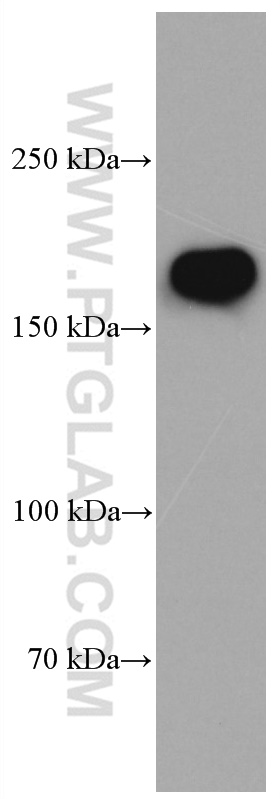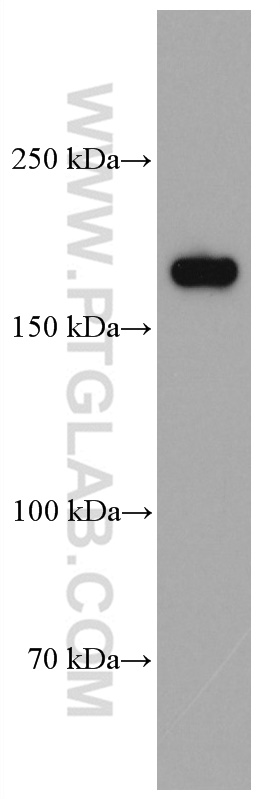验证数据展示
产品信息
66565-1-PBS targets NMDAR2B/GRIN2B in WB, Indirect ELISA applications and shows reactivity with Human, Mouse, Rat samples.
| 经测试应用 | WB, Indirect ELISA Application Description |
| 经测试反应性 | Human, Mouse, Rat |
| 免疫原 |
CatNo: Ag16718 Product name: Recombinant human GRIN2B protein Source: e coli.-derived, PET28a Tag: 6*His Domain: 1133-1485 aa of BC113620 Sequence: YLDQFRTKENSPHWEHVDLTDIYKERSDDFKRDSVSGGGPCTNRSHIKHGTGDKHGVVSGVPAPWEKNLTNVEWEDRSGGNFCRSCPSKLHNYSTTVTGQNSGRQACIRCEACKKAGNLYDISEDNSLQELDQPAAPVAVTSNASTTKYPQSPTNSKAQKKNRNKLRRQHSYDTFVDLQKEEAALAPRSVSLKDKGRFMDGSPYAHMFEMSAGESTFANNKSSVPTAGHHHHNNPGGGYMLSKSLYPDRVTQNPFIPTFGDDQCLLHGSKSYFFRQPTVAGASKARPDFRALVTNKPVVSALHGAVPARFQKDICIGNQSNPCVPNNKNPRAFNGSSNGHVYEKLSSIESDV 种属同源性预测 |
| 宿主/亚型 | Mouse / IgG1 |
| 抗体类别 | Monoclonal |
| 产品类型 | Antibody |
| 全称 | glutamate receptor, ionotropic, N-methyl D-aspartate 2B |
| 别名 | GluN2B, GRIN2B, hNR3, NMDAR2B, NMDAR2B/GRIN2B, NR2B, NR3 |
| 计算分子量 | 1484 aa, 166 kDa |
| 观测分子量 | 166 kDa |
| GenBank蛋白编号 | BC113620 |
| 基因名称 | GRIN2B |
| Gene ID (NCBI) | 2904 |
| RRID | AB_2881926 |
| 偶联类型 | Unconjugated |
| 形式 | Liquid |
| 纯化方式 | Protein G purification |
| UNIPROT ID | Q13224 |
| 储存缓冲液 | PBS only, pH 7.3. |
| 储存条件 | Store at -80°C. The product is shipped with ice packs. Upon receipt, store it immediately at -80°C |
背景介绍
GRIN2B (also known as GluN2B or NMDAR2B) is a member of the N-methyl-D-aspartate (NMDA) receptor family within the ionotropic glutamate receptor superfamily. NMDA receptors are widely expressed in the central nervous system and play a major role in excitatory synaptic transmission and plasticity (PMID: 23223336). NMDA receptors large multi-subunit complexes arranged into heteromeric assemblies composed of four homologous subunits within a repertoire of over 10 different subunits: eight GluN1 isoforms, four GluN2 subunits (A-D) and two GluN3 subunits (A and B) (PMID: 21395862). Naturally occurring mutations within GRIN2B gene are associated with neurodevelopmental disorders including autism spectrum disorder, attention deficit hyperactivity disorder, epilepsy, and schizophrenia.



